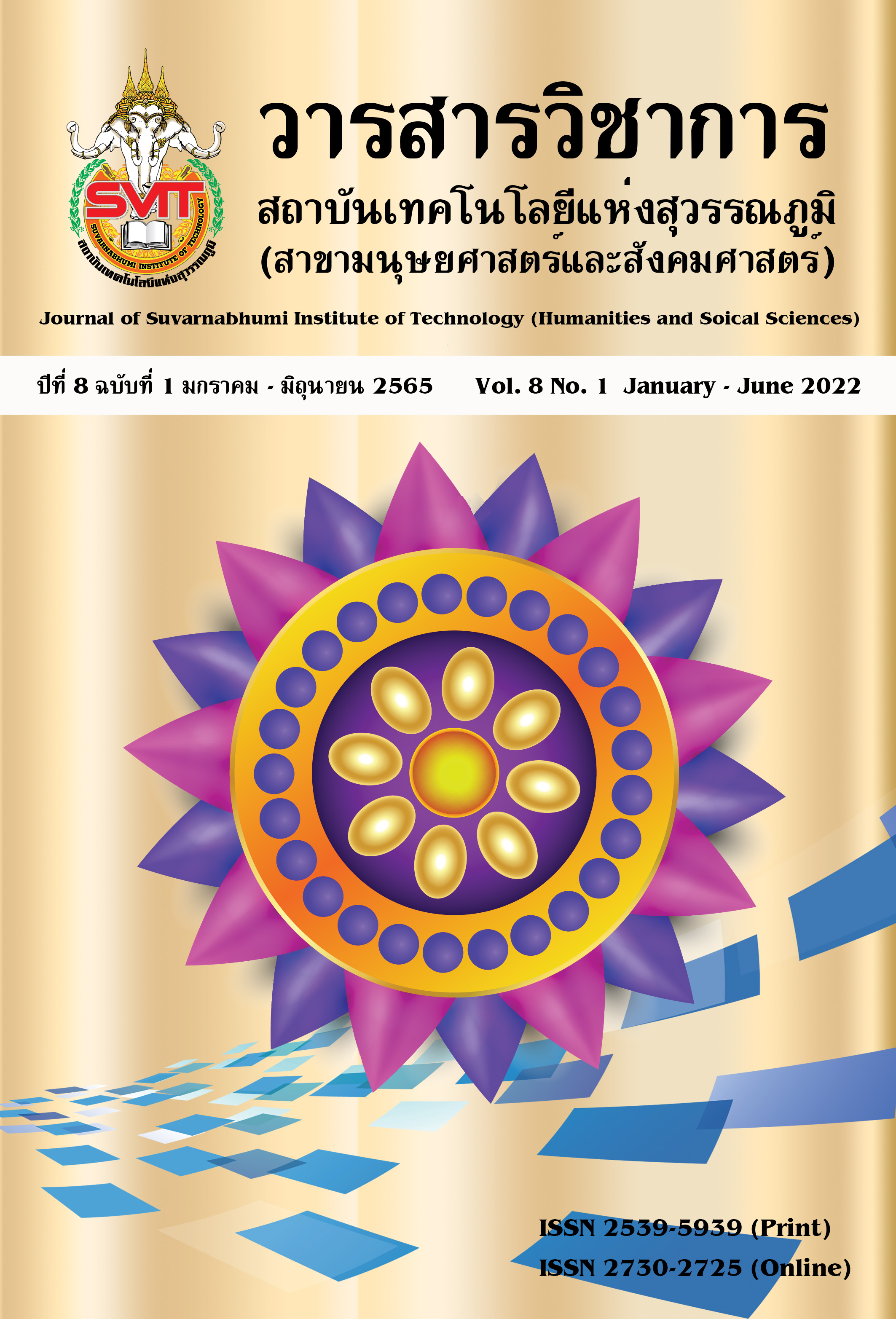BUSINESSES TRANSITIONING TO A NEW NORMAL WAY WITH THE CANVAS BUSINESS MODEL
Keywords:
Business, New Normal, Business ModelAbstract
The outbreak of corona virus or COVID-19 has widely affected the economy, society, and culture. This leads the business owners to realizing the needs to analyze the situation causing them to enter the era known as "A New Normal". This new normal way of life is determined by reducing interpersonal contact, increasing social distance, and working from home. Businesses in the new normal are inevitably abiding by in order to keep customers distanced from each other and following new practices which become the new norm.
Given the above situation, new young business owners with new vision and willing to move forward to start a new business are allowed to enter a market and defeat the big business operators as well as able to meet the needs of consumers with superior product quality or services. Businesses should change their traditional ideas and adapt themselves to the current situation in order to properly offer products or services using Business Model Canvas (BMC) as a marketing tool to develop and consolidate ideas to deliver innovative products or services and meet the needs of consumers from being affected. Furthermore, businesses should be open-minded in order to provide opportunities to deliver creative and quality work.
References
กรุงเทพธุรกิจ. (2563, 27 พฤษภาคม). ‘New Normal’ คืออะไร? เมื่อโควิด-19 ผลักเราสู่ชีวิต ‘ปกติวิถีใหม่’.
สืบค้นเมื่อ 21 มกราคม 2564, จาก https://www.bangkokbiznews.com/news/detail/882508
กิตติคุณ นิมิตแสงเทียน, พิชญา ตันติอำไพวงศ์ และ กุลกนิษฐ์ คุณาธิกรกิจ. (2561). การพัฒนาแบบจำลอง
ธุรกิจเชิงกลยุทธ์ธุรกิจค้าวัสดุและอุปกรณ์ก่อสร้าง. ใน INCBAA 2018 (น. 397-413). Khon Kaen. สืบค้นเมื่อ 21 มกราคม 2564, จาก https://incbaa.kku.ac.th/img/files/articles/7d1cc- 397-.pdf
ณัฐนัย ตรีเนตรสัมพันธ์. (2559). การพัฒนาโมเดลธุรกิจด้วยวิธีการลีนสตาร์ทอัพ. วารสารวิจัยและพัฒนา มจธ, 39(3), 337-351.
ปณชัย อารีเพิ่มพร. (2563). 10 ธุรกิจดาวรุ่ง-ดาวร่วง ปี 2564 “อาชีพไหนมาแรง” อาชีพใดเข้าข่ายเสี่ยง. สืบค้นเมื่อ 21 มกราคม 2564, จาก https://thestandard.co/10-business-rising-stars-falling-stars-of-2021/
อัตถพงศ์ เขียวแกร, อภินันท์ เอื้ออังกูร, พีระ ทองมี, ทวนธง ครุฑจ้อน และ ชลลดา แสงมณี ศิริสาธิตกิจ. (2563). การพัฒนาศักยภาพและเพิ่มขีดความสามารถด้านการแข่งขันของวิสาหกิจโรงสีข้าวชุมชนบ้านหนองโอน ตำบลควนรู อำเภอรัตภูมิ จังหวัดสงขลา. สำนักงานการวิจัยแห่งชาติ (วช.) และสำนักงานคณะกรรมการส่งเสริมวิทยาศาสตร์ วิจัย และนวัตกรรม (สกสว.).
Alex Osterwalder Yves Pigneur Greg Bernarda Alan Smith. (2014). How to create products a services customers want. Get start with Value Position Design V. Kumar, and D. Dutta “An assessment of data formats for layered manufacturing” Advances in Engineering Software, vol. 28, no. 3, pp. 151-164, 1997
Lee, H-W., & Yu, C-F. (2010). Effect of relationship style on innovation performance. Afr. J. Bus. Manage., 4(9), 1703-1708.
Oliveira, MA., & Ferreira, JJP. (2010). Inspiring disruptive change: A novel approach to modeling the value creation process. In Piet Kommers, & Pedro, Isaias (Eds.), The International Conference IADIS e-Society 2010 Proceedings 18-21 March 2010, Hotel Mella Gala Porto (pp.203-212). Portugal: Porto.
Osterwalder, A., & Pigneur, Y. (2002). An eBusiness model ontology for modeling eBusiness. In 15th Bled Electronic Commerce Conference – eReality: Constructing the eEconomy (pp.75-91). Bled, Slovenia, June 17-19 Retrieved January 21, 2021, from https://aisel.aisnet.org/cgi/viewcontent.cgi?article=1047&context=bled2002
Osterwalder, A., & Pigneur, Y. (2010). Business model generation – A handbook for visionaries, game changers and challengers. Hoboken, NJ: John Wiley and Sons, Inc.
Rogge, R.D. (2014). The Innovation Canvas as a Teaching Tool in Capstone Design : A Reverse-Engineering Case Study The Innovation Canvas as a Teaching Tool in Capstone.
Downloads
Published
Issue
Section
License
Copyright (c) 2022 Suvarnabhumi Institute of Technology

This work is licensed under a Creative Commons Attribution-NonCommercial-NoDerivatives 4.0 International License.
บทความที่ได้รับการตีพิมพ์เป็นลิขสิทธิ์ของวารสารวิชาการ สถาบันเทคโนโลยีแห่งสุวรรณภูมิ
ข้อความที่ปรากฏในบทความแต่ละเรื่องในวารสารวิชาการเล่มนี้เป็นความคิดเห็นส่วนตัวของผู้เขียนแต่ละท่านไม่เกี่ยวข้องกับสถาบันเทคโนโลยีแห่งสุวรรณภูมิ และคณาจารย์ท่านอื่นๆในสถาบันฯ แต่อย่างใด ความรับผิดชอบองค์ประกอบทั้งหมดของบทความแต่ละเรื่องเป็นของผู้เขียนแต่ละท่าน หากมีความผิดพลาดใดๆ ผู้เขียนแต่ละท่านจะรับผิดชอบบทความของตนเองแต่ผู้เดียว





